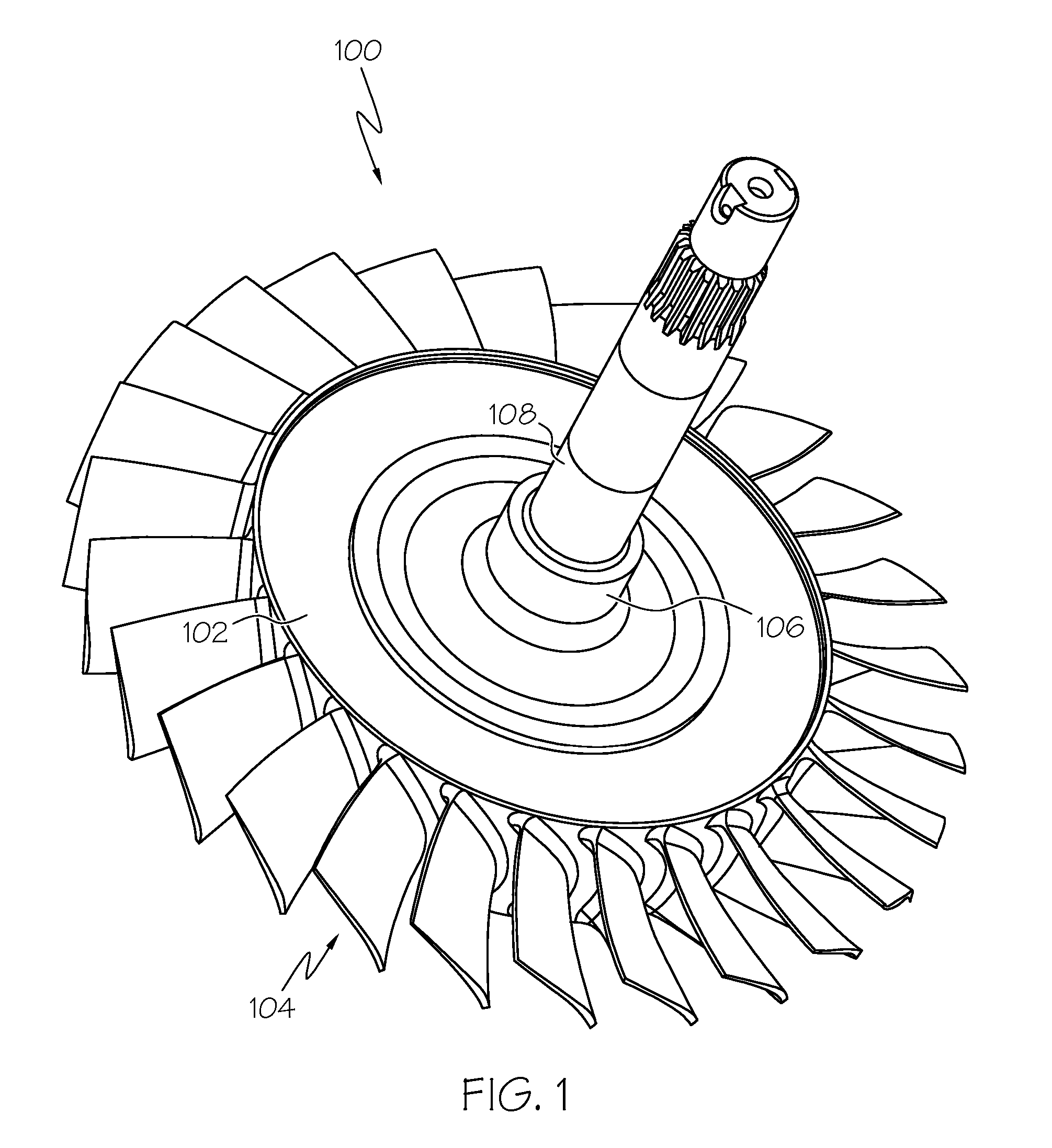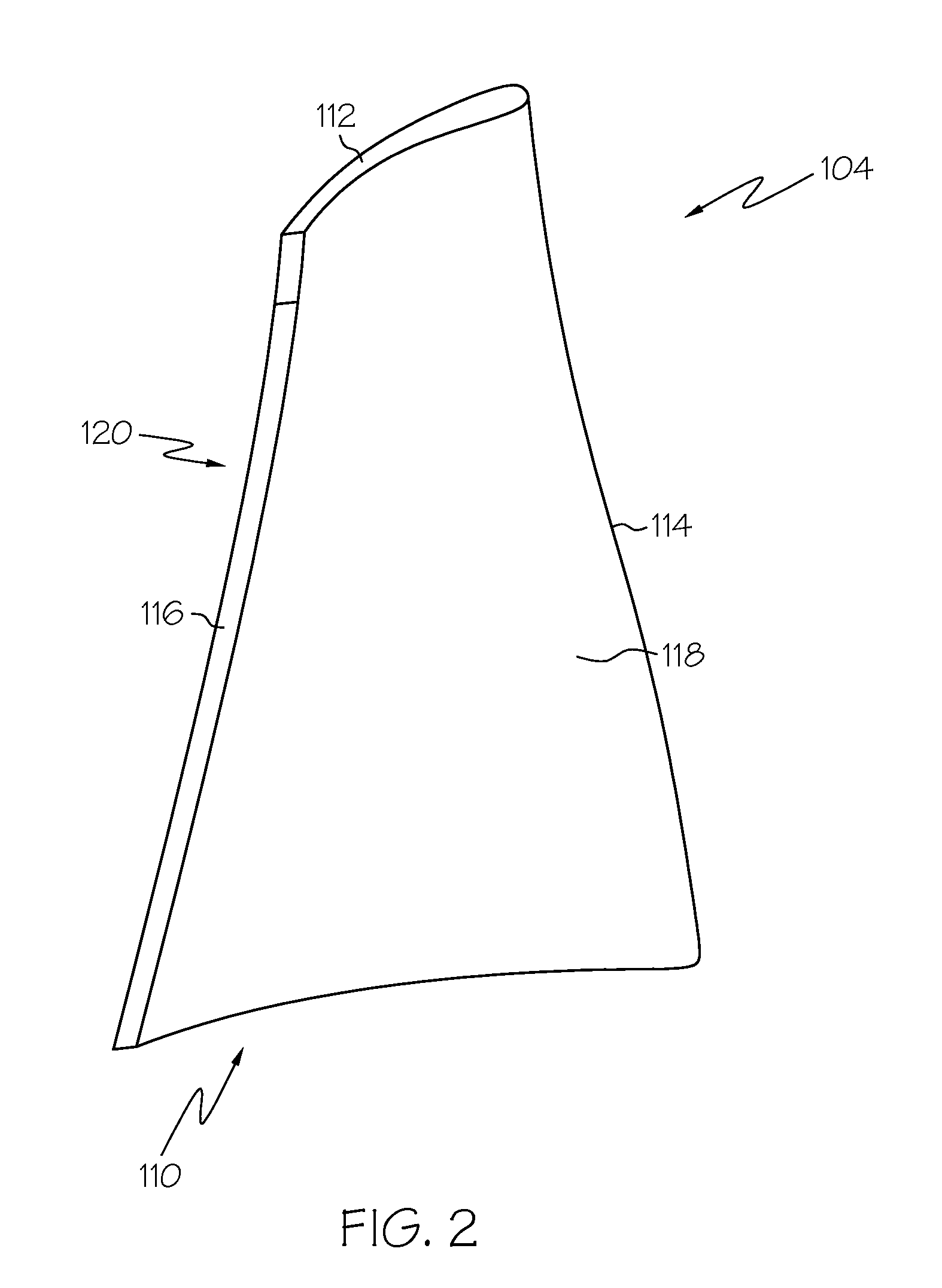Frequency tailored thickness blade for a turbomachine wheel
a turbine wheel and thickness technology, applied in the direction of machines/engines, mechanical equipment, transportation and packaging, etc., can solve the problems of unintentionally intensifying the response of hitherto secondary, reducing the life of the turbine wheel, and creating new resonant responses altogether. , to achieve the effect of reducing the effect of vibratory stress
- Summary
- Abstract
- Description
- Claims
- Application Information
AI Technical Summary
Benefits of technology
Problems solved by technology
Method used
Image
Examples
Embodiment Construction
[0016] The following detailed description is merely exemplary in nature and is not intended to limit the invention or its application and uses. Furthermore, there is no intention to be bound by any theory presented in the preceding background or the following detailed description. In this regard, before proceeding with the detailed description, it will be appreciated that the present invention is not limited to use with a particular type or configuration of turbine wheel, and it will be appreciated that the embodiments could also be used in conjunction with any wheel having blades extending therefrom and other objects that may be subject to vibration where alternating stress and strains can be accurately measured or predicted during the design of the object.
[0017] The blades 104 are arranged around the outer periphery of the hub 102, preferably, in a configuration that optimizes the efficiency of the rotating turbine wheel 100. For example, the blades 104 may be equally spaced apar...
PUM
 Login to View More
Login to View More Abstract
Description
Claims
Application Information
 Login to View More
Login to View More - R&D
- Intellectual Property
- Life Sciences
- Materials
- Tech Scout
- Unparalleled Data Quality
- Higher Quality Content
- 60% Fewer Hallucinations
Browse by: Latest US Patents, China's latest patents, Technical Efficacy Thesaurus, Application Domain, Technology Topic, Popular Technical Reports.
© 2025 PatSnap. All rights reserved.Legal|Privacy policy|Modern Slavery Act Transparency Statement|Sitemap|About US| Contact US: help@patsnap.com



